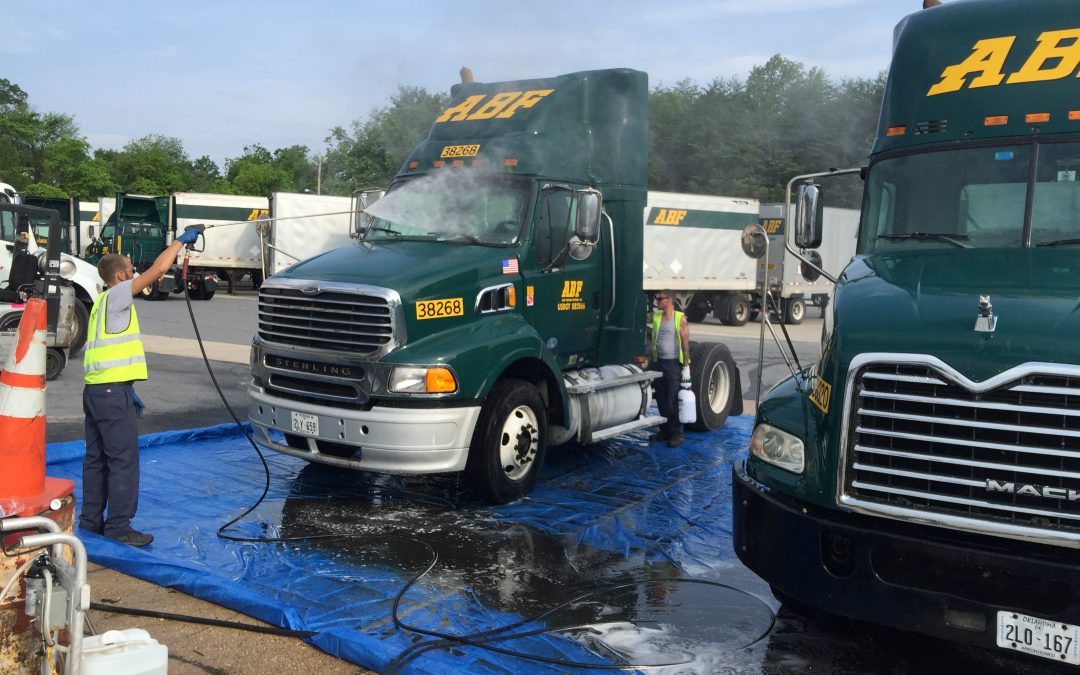Back in the day when I was in the fleet washing business, I often made sales calls, sometimes as a request of an owner or manager, but often from the “dirty” habit of seeing filth everywhere. It’s a curse you know. Even after years of retirement, I must admit that I drive my wife nuts when passing a dirty truck or walking out of a convenience store.
Making the call and selling our pressure washing service was one thing, but when it came to where to wash and what we were gong to do with the waste water, well, that’s when the real resistance came in. I would sometimes think that I was talking to a person that had been under a rock for the last 20 years. With all the Department of Natural Resources and EPA regulations regarding pollution that have sprung up, you would think the issue of where the dirty water was going would be the first priority, not the last resistance. I can tell you that I usually had the business in the bag until I brought that up. It was as if you did not talk about waste water management, the problem did not exist and just the mention of removal or treatment was a deal killer Ignorance is bliss, right?
The fact is that no matter where and how the vehicle gets dirty; the owner of that truck now owns the dirt. Funny how the state can pile sand and salt over the roads, the truck picks it up, and now the liability for its removal is all in the hands of the fleet owner. Not only do they “own” the dirt, they inherit the waste water for removing it. Even though my company did the power washing, that trucking company was responsible for any pollution created as a result of that washing.
Naturally, my company played an important role in managing that waste water production, so it was a CYA operation to convince the fleet manager of the importance of safely and legally dealing with the stuff. Proper cleaning compounds, collection and percolation techniques minimized our exposure and protected the customer from unwanted government scrutiny. The EPA does not have a sense of humor about this. In 2012 alone, the EPA levied over $260 million in fines for waste water violations and you know that number has increased each year.
Strict interpretations of these rules are the norm. A local high school installed the cooling mist fans at the football field to keep their players more comfortable and the district was forced to remove them because the municipal water supply was chlorinated and there was a chance that said chlorine gas could reach the groundwater. That’s just water, not water mixed with cleaning compounds and dirt.
For most power washing operations, there is a cost to comply. Additional equipment and man power is required to collect or divert the contaminated water and each state has its own set of regulations about what to do with it. This expense has to be included into any washing budget and consequently, it is where I would lose a contract to a competitor who willfully ignored the regulations, exposing the fleet to large fines and public scrutiny. This is not a case of any publicity is good publicity.
So, you fleet managers out there, I have some news for you. If you haven’t thought about your water and dirt, you better get with the program. Don’t think you are off the hook just because you hired “Two Guys with a Power Washer” to wash those vehicles. They have a legal obligation to educate and comply, but the responsibility for compliance is with you. I can guarantee that without a plan that is faithfully followed, sooner or later, you will hear from some agency looking for your money, substantially more than the cost of prevention.
If you would like more information regarding Waste Water Management or would like to discuss our Fleet Washing Program, please reach out to us – we are here to help.


Recent Comments